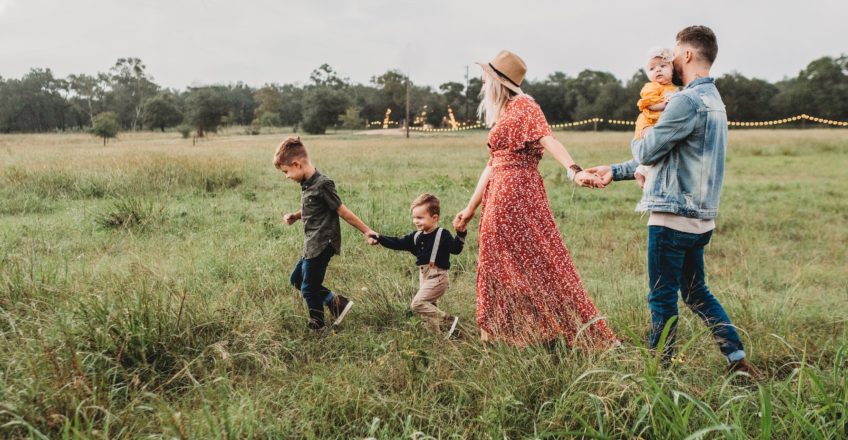When addressing the topic of pornography today we can’t just say “not my kid!” We know that 98% of young people will see pornography by the time they’re 18. So what do parents need to do?
I had a chance to speak with Greta Eskridge of @maandpamodern and she gave some helpful advice. You can listen to the interview at the Gospel Tech Podcast.
Before we begin, let’s take a moment to remember that our goal is not to porn-proof our children. Our goal is to make them porn resilient. We don’t want to make them perfect because we will end up making them brittle. We want to make them flexible so that they know what to do when they run into the problems of this world.
We can begin this conversation three simple steps:
1. Give them a definition of what pornography is so they will know it when they see it.
Saying “don’t look at porn” isn’t helpful because, frankly, there’s so much porn around us all the time it’s almost impossible to avoid. We have to go beyond the 1964 definition by Justice Stewart who defined obscene images by the “I know it when I see it” approach. That’s not helpful to our children!
We need to help our children know what pornography is. A great resource to being this conversation is reading a book with our children like “Good Picture, Bad Picture” by Kristin Jenson. It helps bridge the conversation without shame, and gives words to continue the conversation in the future.
Take Away: Having a definition of pornography (that is age appropriate) equips our children to know it when they see it, which then empowers them to be informed for step #2: knowing where they might see it.
2. Tell them where they might encounter pornography.
We’re not trying to give them a handbook on how to find porn if they’re interested, but we do want to give our children an idea of places they may encounter pornography. The main reason is that it’s so prevalent it can feel “normal”, which can make it difficult for our children to explain or communicate what it is that’s making them feel “icky.”
Examples of places our children can find pornography will include:
- tv
- movies
- streaming shows
- video games
- advertisements
- magazines
- social media
- libraries (both public physical libraries and e-libraries from Amazon to Libby)
- pop-up ads on the internet
Take Away: Having a list of where they may encounter pornography, and a clear definition of what it is, allows our children to mentally prepare for the right course of action should they come across unsafe or unkind content.
This then prepares them for the third step: What to do.
3. Tell them what to DO when they see pornography.
The information we’ve equipped our children with is only valuable when it’s connected to action: They know what it is, and where it might be, but what happens if/when they come across it? Start with two simple steps.
1. Get away from the problematic material. Close the computer or turn the tablet or phone over. If they can they should physically walk away.
2. Tell a caring adult. Young people need a chance to honestly talk out what they just witnessed in a caring, loving, and safe environment. If they are not given a clear outlet they will either internalize all the feelings (which is not helpful) or they will find someone they deem safe (often a peer or someone online), to talk to which can actually be even less helpful.
Just a few more thoughts
Be Specific: Work as a family to name people your child can talk to should the occasion ever arise. Make a list of specific individuals: Mom, Dad, Aunt Sarah, whomever is a designated and trusted adult you’ve equipped for such an occasion (and make sure you let that adult know they are your resource!)
Be Hope Focused: Emphasize to your child that they will not be in trouble when they tell you what they’ve seen, even if they looked at it on purpose. Keep the focus on the truth: That God loves them, you love them, and that sex is a wonderful gift designed by God designed to be shared in very specific ways for a specific purpose. The books listed in this article, as well as in the podcast show notes and in Greta’s resources on Instagram (@maandpamodern). Just click on the “Fight Porn!” circle.
Be a Team: We need our children to know we’re on their team, we have their best interests in mind, and that they will never get in trouble for what they come across, or even dive into on purpose, online. The damage we’re worried about isn’t going to come from our end, it’s the lies, shame, and addiction that can pull them further in even against their own will.
Focus On Resilience
We won’t porn-proof our kids, but with these steps we can help them become porn-resilient. They will be able to bounce back, get the help they need (for themselves and for others), and address real issues with a healthy mindset without shame or fear. The Gospel is shown in this approach because our perfection doesn’t come from our own strength or good plans. God gives us mercy when he doesn’t give us exactly what we’ve earned with our rebellion and pursuit of our own good instead of His. Mercy is the cancellation of our death penalty which we’ve fully earned. But when he gives us the good we don’t deserve it is a gift freely given called Grace.
We can extend grace to our children in this topic too, showing them that we love them despite their brokenness, mistakes, and hurt. We love because we were loved first, and that gives us a chance to pass it on.
